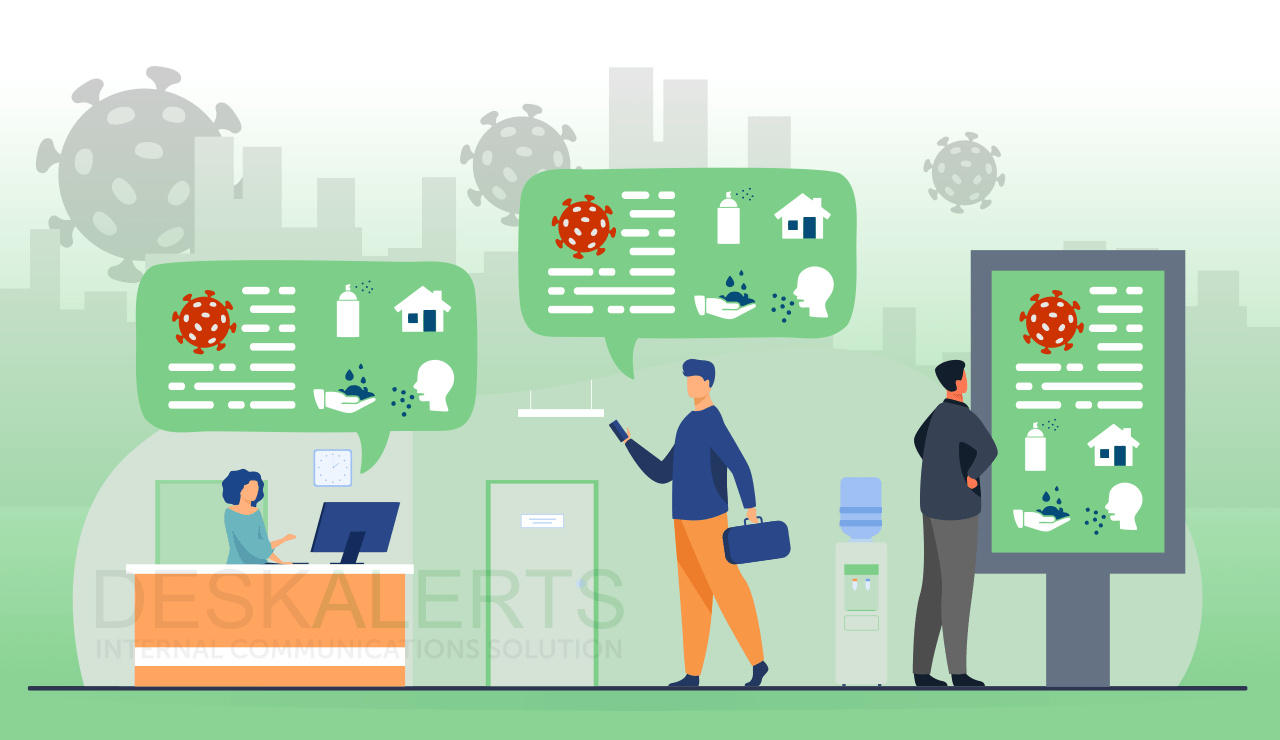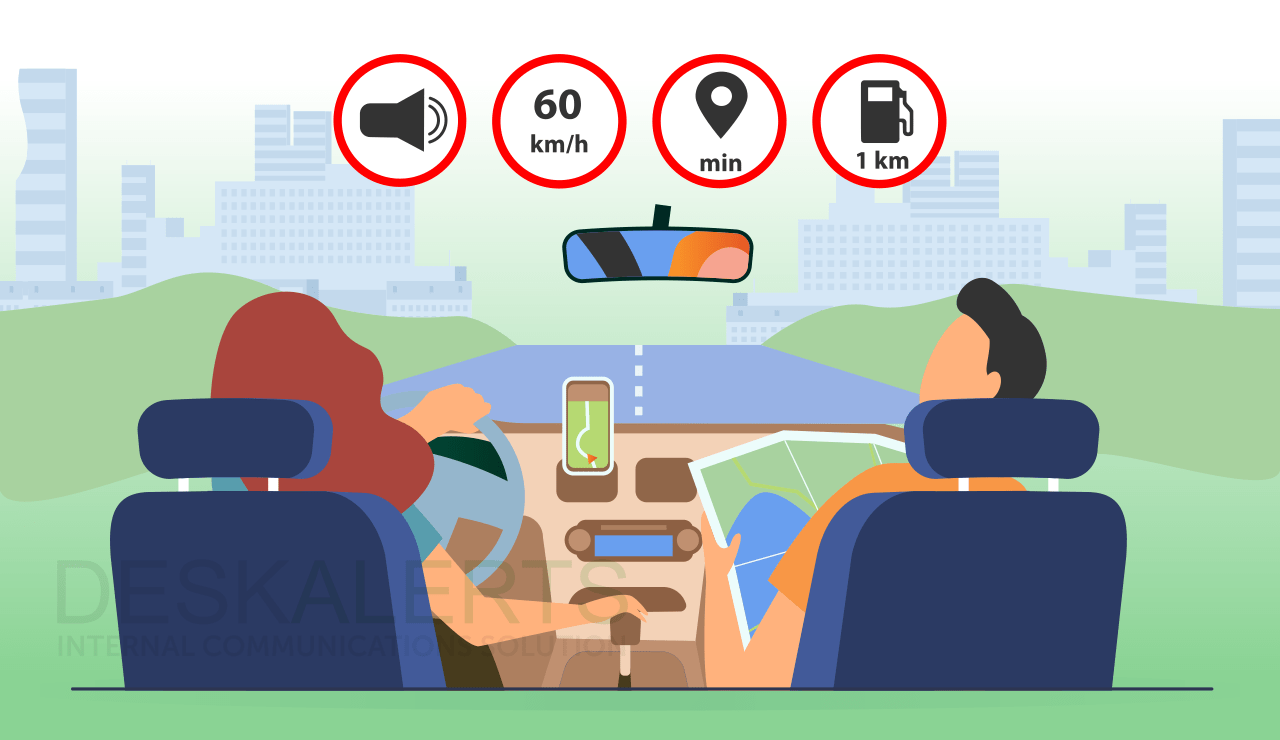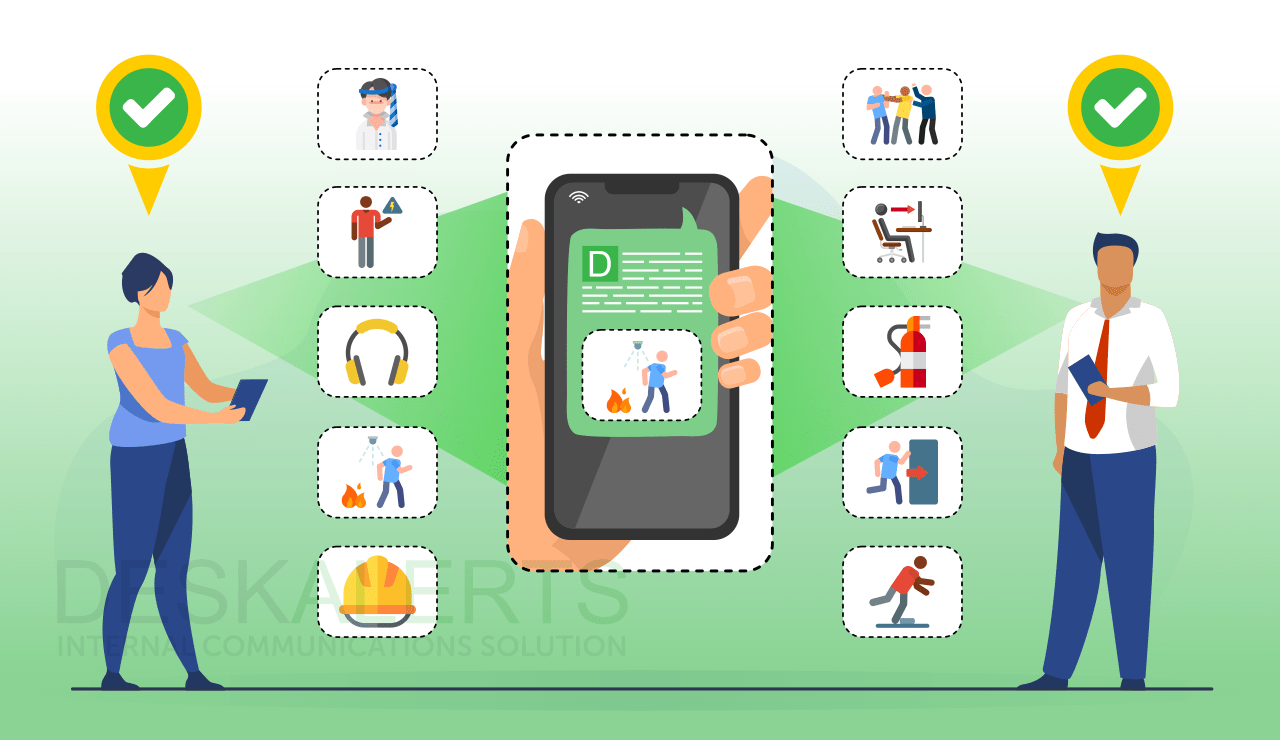 Sometimes inspiration is needed in times of uncertainty— the guidelines and tips below will show you how to send a COVID safety message to employees.
Sometimes inspiration is needed in times of uncertainty— the guidelines and tips below will show you how to send a COVID safety message to employees.
To help prevent the spread of the Coronavirus (COVID-19) infection, most businesses are required to communicate with all of their workers, to make sure that the right safety precautions are taken during each shift.
Safety alert messages will keep your valued workers, informed, educated, and calm - so everyone can come together to maintain a sanitary work environment.
You can begin this notification process by sending an email to employees about coronavirus facts and what they can do to protect themselves.
Table of Contents
Information that a COVID-19 safety message for employees should include
An example of a COVID-19 letter to employees
Organize your COVID Safety Messages into Separate Groups for Specific Recipients
DeskAlerts has easy to use software for COVID communications
Information that a COVID-19 safety message for employees should include
It's time to send out a COVID message to employees, but what do you say?
Here is an outline of the best things to include in your COVID message updates:
- Remind sick employees to stay home.
- Remind employees that if they are experiencing symptoms, they should notify their supervisor and stay home.
- Recommend testing for any employees that are experiencing signs or symptoms of COVID.
- Alert employees if the company will start conducting daily in-person or virtual health checks, and/or periodic testing.
- Ask employees to take their temperature before coming to the workplace or upon arrival—have them confirm that their temperature is less than 100.4 degrees F (38.0 degrees C).
- Remind employees to have good hygiene habits— to always wash their hands with soap and water for 20 seconds or to use hand sanitizer with 60% alcohol.
- Employees should be reminded to avoid touching their faces and to stay 6 feet apart from each other as much as possible.
- If everyone is quarantined, make sure to send out facts to clear up any misinformation.
- Let everyone know if masks will be required daily on-site.
- Keep employees up to date with any new COVID-19 company policies.
- Reinforce and remind employees of any existing company policies during the crisis.
- Create, distribute, and enforce any new rules that may be needed.
- Make sure everyone is aware of when to self-isolate.
- Make it clear how payroll or vacation days are affected by these changes.
- Include helpful information on work-from-home protocols, maintaining a safe and hygienic workplace, and how to communicate with the managers from now on.
The leaders and higher-ups should keep a close eye on updates from the World Health Organization (WHO), the Center for Disease Control and Prevention, and the American Medical Association.
Updates from other local authorities should be communicated to your employees in a timely fashion.
An example of a COVID-19 letter to employees
“To: Our employees
Subject line: Coronavirus update for all employees— How we can maintain a safe workplace
The concern about COVID-19 is rising on a global scale, and there is a lot of information spreading about this contagious virus already.
For us to keep operations running smoothly— new safety and hygienic rules will need to be implemented.
Please read these guidelines carefully and be aware of the changes that have been made to our company's policies.
All employees are required to know these rules and to follow them.
If you are looking for up-to-date information on all things COVID related, then please refer to these specific, accurate websites: The CDC and The WHO.
Since the virus is highly contagious, we recommend everyone to get vaccinated as soon as possible, unless you are exempt because of religious reasons or disabilities.
Please follow the checklist below with great responsibility and diligence, we believe in you!
If you have a fever over 100 degrees, please stay home to ensure that you have not contracted coronavirus. Please respect these self-isolation regulations.
Please stay home for 14 days if you have been in contact with someone who had a confirmed case or has been potentially infected by COVID.
[Include more points from the section above outlining what a COVID message should include]
Our responsibility to you:
- Provide hand sanitizer, masks, and tissues for every employee.
- Update all employees through daily or weekly COVID text alerts.
- Daily deep cleaning of frequently touched surfaces and objects (including desks, keyboards, doorknobs, phones, and sinks)— using disinfecting wipes to help prevent the spread of COVID-19 and other viruses.
Reply to this email or text your specific supervisor directly, if you have any questions.
Let's make it our goal to push through these challenging times with positivity and ease.
Sincerely,
[Company name or department]”.
Get 15 most needed internal message templates

Organize your COVID Safety Messages into Separate Groups for Specific Recipients
Most businesses have remote employees and those that work in the shops/on-site.
Remote workers will have different precautions to take than the on-site workers— so have separate messages planned out for each group.
COVID alerts specifically for corporate leaders should be grouped separately from employees.
Employees in different countries with different precautions will need to be grouped accordingly.
Example: 4 main groups to be contacted and updated about current COVID procedures
- Remote workers
- On-site workers
- Corporate leaders (Hire-ranking managers and directors)
- International workers (if applicable).
Two-way communication works best when you are wanting to send a COVID message to staff during the pandemic.
This type of communication allows for a direct response back, promptly, which is perfect because the coronavirus is always changing with new updates to be shared amongst everyone.
Two-way communication allows the managers to be more available to answer all questions and concerns related to COVID.
This way, your employees will feel heard and supported through these times which can seem confusing if we are not all informed on the facts.
This type of “instant communication” allows your staff to receive the correct information straight from the company— before they hear misinformation from somewhere else.
Some of the best forms of two-way communication for COVID-19 updates would be:
-
Sending a COVID email to employees.
-
Sending out COVID reminders for employees through instant messaging (text alerts).
-
COVID updates via Zoom meetings.
-
Outdoor in-service meetings (masks recommended).
DeskAlerts has easy to use software for COVID communications
This global pandemic has led many organizations to turn to DeskAlerts as their preferred alert notification and internal communication system.
Internal communication is the function responsible for how information is shared throughout an organization.
If the safety information is shared effectively, the crisis can’t get out of hand - instead, it becomes more organized and hopefully - eventually, better.
Employers could send out a coronavirus email to employees and leave it at that. However, it would be even more effective if DeskAlerts channels and functions were used alongside email use.
These channels will guarantee 100% readership by all your employees (no more ignoring work emails!).
DeskAlerts channels and functions available:
-
Other DeskAlerts Tools: Video alerts, corporate newsletters, corporate desktop wallpapers/screensavers (these could be customized to include a COVID letter to employees), and more.
Sending safety messages using traditional email and DeskAlerts channels— can all be done simultaneously, with just a click!
***
As an employer, your responsibility is to educate, inform, and update your employees on the ever-changing status of COVID-19 and the safety procedures it calls for.
Remember to stay educated and informed on the virus, and use an organized communication system that is easy for you to get the word out.
FAQ
How to protect employees from COVID-19?
- Remind employees that people may be able to spread COVID-19 even if they aren’t showing any symptoms.
- Discourage handshaking, fist bumps, and hugs.
- Encourage any gatherings of big groups to be held outdoors
- Focus on establishing social distance policies and practices.
- Encourage employees to bike, walk, or drive alone to work or with a family member instead of ride-sharing or taking public transportation because of the COVID risk.
How can employees and customers in workplaces protect themselves from COVID-19?
- Clean frequently touched surfaces with disinfecting wipes
- Make sure everyone knows when to self-isolate
What if an employee refuses to come to work for fear of infection?
The risks and facts about COVID-19 should have been addressed clearly by you in your COVID updates— so that your employees are well-informed and understand that if they follow these guidelines, they will be okay.
If you have educated your employees and are still having an issue with this, then please check with your local and state regulations to see what you have to do and how you should proceed with them.
 Sometimes inspiration is needed in times of uncertainty— the guidelines and tips below will show you how to send a COVID safety message to employees.
Sometimes inspiration is needed in times of uncertainty— the guidelines and tips below will show you how to send a COVID safety message to employees.






